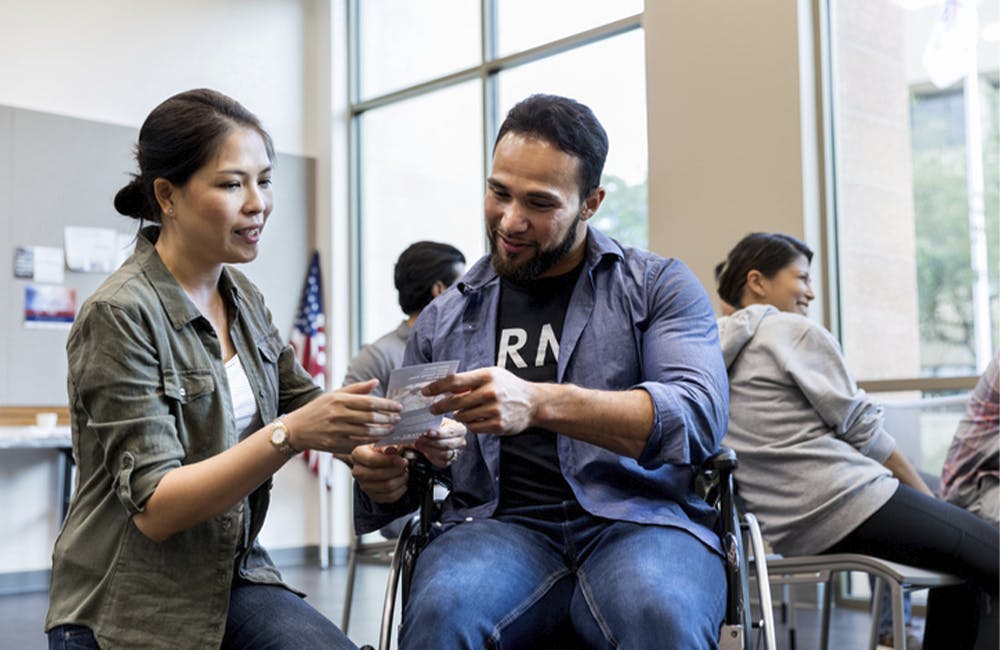VA Hospitals Take Lead in Patient Experience

Department of Veterans Affairs facilities outperformed community hospitals in key areas of patient experience according to a recent patient survey from the Medicare Hospital Consumer Assessment of Healthcare Providers and Systems (HCAHPS).
Encompassing 109 total VA hospitals, the Medicare survey included eleven metrics that measure patient satisfaction with quality of care, upkeep of facilities, communication from caregivers, as well as post-discharge information and transition to in-home care.
The report indicated that 54% of VA medical centers received 4 or 5 HCAHPS Stars for the Patient Survey Rating compared to 35% of community hospitals.
This represents a notable increase since VA was first included in HCAHPS survey in 2018, a sign that healthcare modernization and focus on improving patient experience appear to have paid dividends for veterans using the agency’s care centers.
“Four years ago, only 26% of VA hospitals received 4 or 5 HCAHPS Stars for Patient Survey Rating — rising to 54% — in the latest January 2022 results,” VA Deputy Under Secretary for Health Steven Lieberman said after the survey’s release.
VA has embarked on a period of internal review and healthcare reform following criticism of the agency’s care services in 2014, particularly long wait times and patient attentiveness while receiving treatment.
In the aftermath, both VA leadership and federal legislators have worked to improve the quality of both agency facilities and the care given, with a particular focus on incorporating veteran feedback into this process.
These efforts have sought to merge technological advancements with concrete impacts for veterans seeking treatment at VA care centers. One of the centerpieces of this campaign has been improving continuity of care and immediate access to a patient’s history that can be used to better inform clinical decisions, a process that undergirds VA’s modernization of its electronic health records system that integrates service records with VA patient data. This has allowed VA to better understand the potential origins of new or chronic conditions, refining the care provided and better enabling follow-up in the wake of treatment
VA has also worked to address care gaps between regions and demographics, putting renewed efforts into advancing healthcare equity through critical analysis that identifies these discrepancies before seeking to bridge them through improving access to and availability of services.
These efforts have only been redoubled over the past year, with the Biden administration making concrete steps to improve the quality of veteran care as a whole — including a critical focus on health care modernization. This support for bridging the care gap brings together internal VA efforts with legislative backing, such as the ongoing emphasis on improving the quality of maternity care across the agency that has only received greater support following the signing of the Protecting Moms Who Served Act that augmented funding for VA women’s health care.
Taking these measures as a whole, VA will likely continue to focus on addressing care gaps while modernizing VA facilities and services overall, integrating hard-fought advancements that have been implemented over the COVID-19 pandemic with new initiatives designed to target specific areas of patient satisfaction.
This is a carousel with manually rotating slides. Use Next and Previous buttons to navigate or jump to a slide with the slide dots
-

Trump's Return to Office Sparks Focus on AI Infrastructure
A potential AI czar and prior AI executive orders lead to new considerations for R&D and energy infrastructure.
7m read -

VA Focuses on Continuous Improvement for 2025 EHR Rollout
VA plans to resume rollout of its EHR in FY 25, focusing recent feedback to drive continuous improvement amid the presidential transition.
4m read -

Trump's Intelligence Pick Backs Cybersecurity, Tech Accountability
The former congresswoman has called for improving cyber defenses and advocated for accountability in federal tech and data practices.
2m read -

Trump's Education Nominee Calls for Tech Vocational Programs
Linda McMahon has called for investments in the tech workforce and small businesses to remain competitive.
3m read








